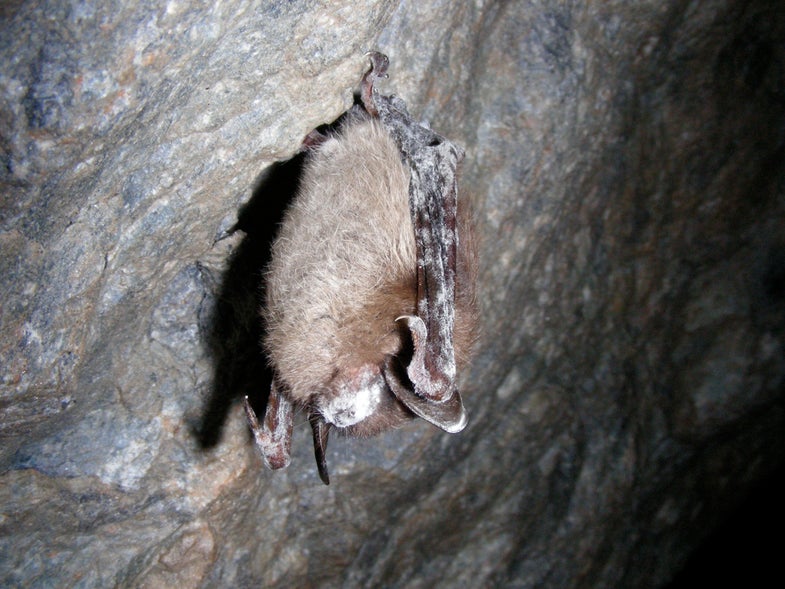Formerly Common Little Brown Bat May Be Headed For Endangered Species List
Biologists are asking the U.S. Fish and Wildlife Service to determine whether the little brown bat — formerly one of...

Biologists are asking the U.S. Fish and Wildlife Service to determine whether the little brown bat — formerly one of the most common mammals in North America — should be added to the endangered species list, bat conservationists said Thursday.
“The little brown bat is in imminent danger of extinction in its northeastern core range due to white-nose syndrome, and the species is likely in danger of extinction throughout North America,” said Tom Kunz, a leading authority on bats at Boston University. Kunz and collaborators wrote a status review for the FWS that outlines the troubles presented by WNS.
Since 2007, more than 1 million bats have died from white-nose syndrome, caused by a fungus called Geomyces destructans that biologists believe arrived from Europe. The bats awaken every few days, burning their precious fat reserves; ultimately, they freeze, starve to death or are picked off by opportunistic predators.
In a study published this week, Carol Meteyer, a pathologist with the U.S. Geological Survey’s National Wildlife Health Center, and colleagues say the fungus represents a brand-new disease paradigm for mammals. Other skin infections don’t invade living tissue, but G. destructans does what its name suggests, destroying the skin of hibernating bats. Although the fungus appears as a powdery white substance on bats’ noses — hence the name — it does the most damage to bats’ wings, researchers say.
Healthy bat wings are critical not only for flight, but for maintaining basic bodily functions — they contain blood and lymphatic vessels, nerves and connective tissue, Meteyer said. Many biologists hypothesize the bats awake from hunger or itchy skin, but a new study published this week suggests thirst may also cause their arousal — Paul Cryan, a bat ecologist at the USGS Fort Collins Science Center, said unusual thirst may result from water leaking out of bat wings damaged by the fungus. The study is published in the journal BMC Biology.
Meanwhile, biologists have asked the FWS to place the little brown bat — the most-affected species — on the endangered species list on an emergency basis, until the agency can complete a formal review. The FWS is accepting public comments through Dec. 26 on its draft WNS plan.